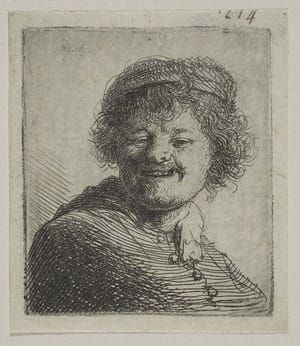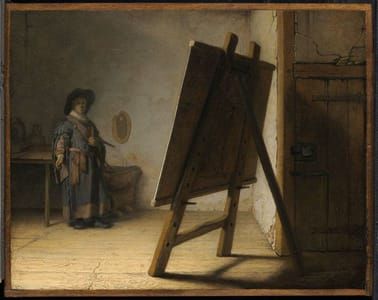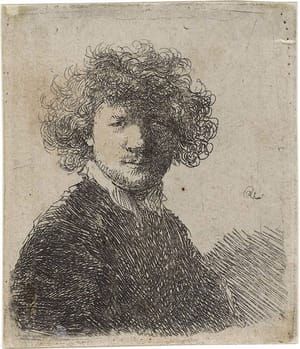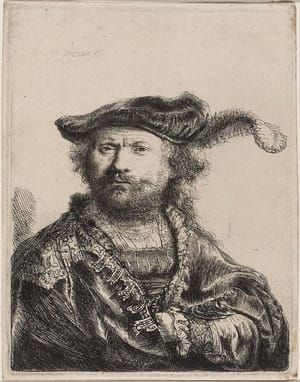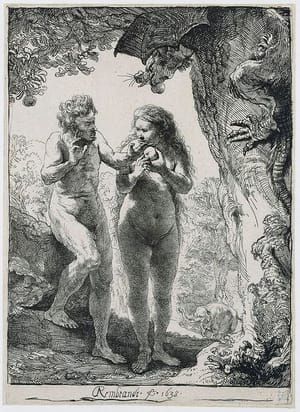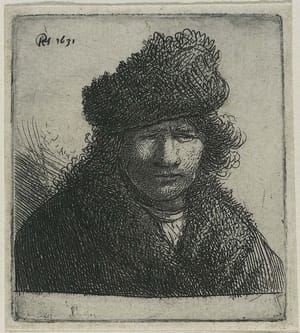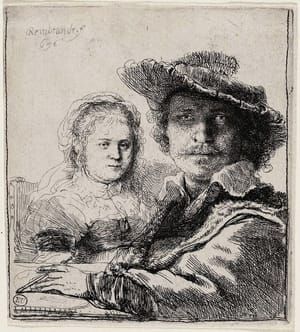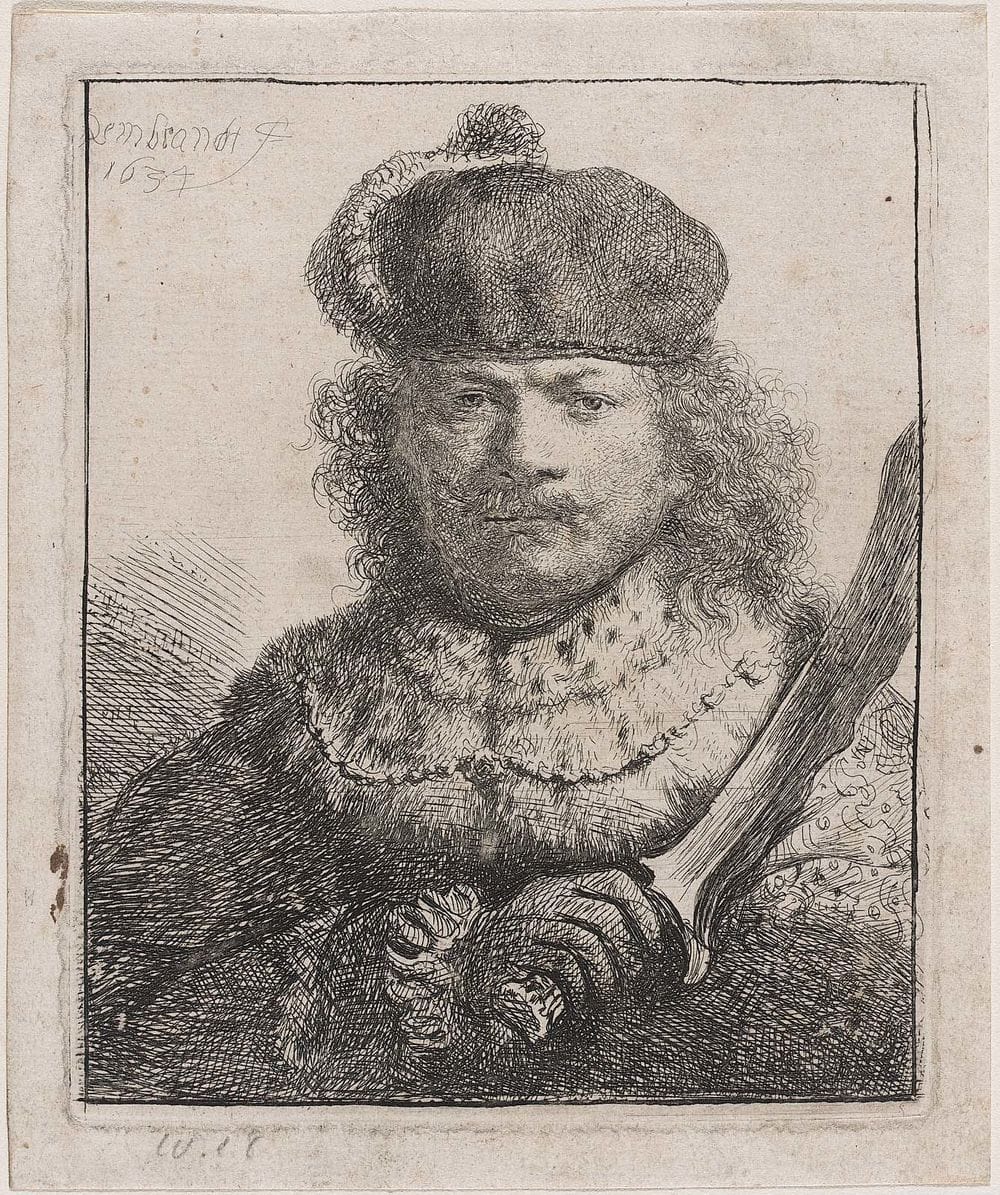

Self Portrait with Raised Sabre, 1634
Rembrandt van Rijn
Also called:Self portrait as an Oriental Potentate with a Kris, and dated 1634.
...While the popular interpretation is that these images represent a personal and introspective journey, it is also the case that they were painted to satisfy a market for self portraits by prominent artists. Both paintings and etchings seem to have often been bought by collectors, and while some of the etchings are very rare, others were printed in considerable numbers for the time. No self-portraits were listed in the famous 1656 inventory, and only a handful of the paintings remained in the family after his death.
Rembrandt's self portraits were created by the artist looking at himself in a mirror, and the paintings and drawings therefore reverse his actual features. In the etchings the printing process creates a reversed image, and the prints therefore show Rembrandt in the same orientation as he appeared to contemporaries. This is one reason why the hands are usually omitted or "just cursorily described" in the paintings; they would be on the "wrong" side if painted from the mirror. References to large mirrors occur at various points from the 1650s, and the later portraits include several showing him at a longer length than before; about 80 cm was the maximum height for a sheet of mirror glass technically possible in Rembrandt's lifetime. One may have been bought about 1652 and then sold in 1656 when he went bankrupt. In 1658 he asked his son Titus to arrange delivery of another one, which broke en route to his house.
Ernst van de Wetering divides the 31 etchings into categories; there "are perhaps only four that were considered by Rembrandt himself as 'official' self-portraits of himself intended for wider dissemination". These are B7, B19, B21 and B22, stretching between 1631 and 1648. There are a number (7 or 8) of what seem to be abandoned attempts at such portraits around the same times, some then used as etching "study sheets". Then there are 10 "early studies in etching technique", most very rare, five "studies in expression", which he distinguishes from the three tronies, finished images using Rembrandt's own features in historical costume.
While the earliest etchings are very rare, many others that are not "official" portraits survive in large numbers, and certainly reached the market of collectors. He notes that such aspects of the painted portraits as historical dress, poses recalling famous Renaissance portraits, a double portrait with Saskia, and portraits in his studio working clothes, are all seen in the etchings before they appear in painted self-portraits. As noted above, there are only two sketchy etchings after 1648, and there are no etched equivalents of the great painted self portraits of the 1550s and 1560s.
(https://en.wikipedia.org/wiki/Self-portraits_by_Rembrandt#Etchings)
Uploaded on Oct 8, 2017 by Suzan Hamer
Rembrandt van Rijn
artistArthur
Wait what?




